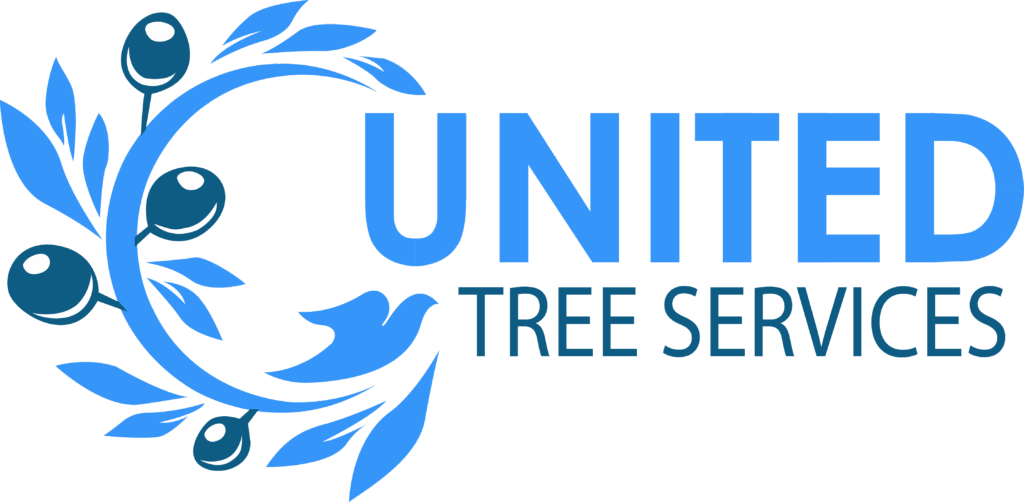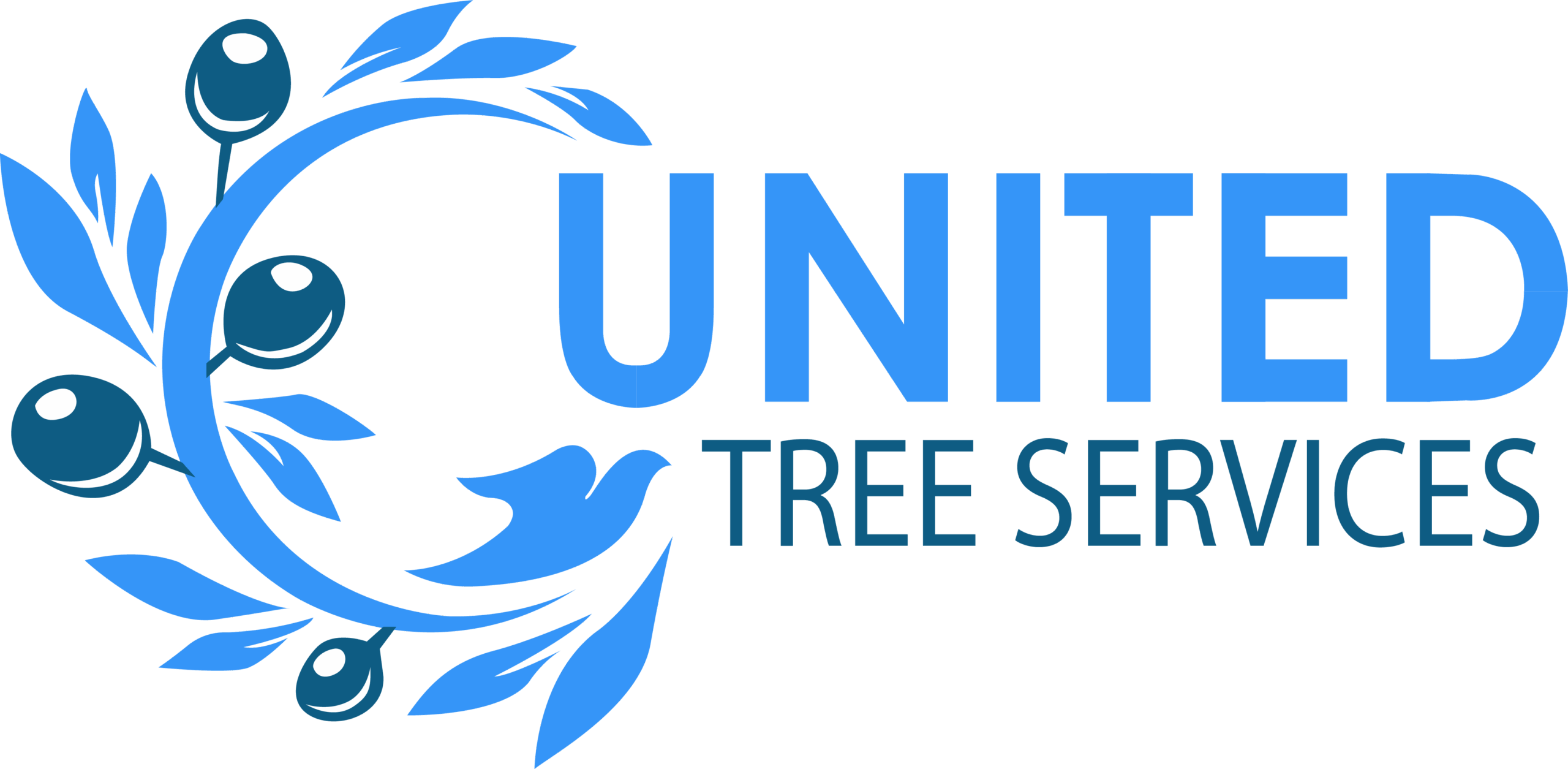Tree Health & Risk Assessments
Expert Tree Health & Risk Assessments in Clifton, VA
Informed Tree Care Guidance for Your Clifton Property
United Tree Service provides professional tree health and risk assessment services throughout Clifton, Virginia. Our certified arborists offer detailed evaluations to identify potential issues, diagnose existing problems, and assess safety concerns related to your trees. Trust our Clifton-based experts for knowledgeable insights that help you make sound decisions about tree care, promoting tree longevity, beauty, and property safety.
QUALITY AND EXPERTISE
WE DO PROFESSIONAL TREE CARE
WE DO PROFESSIONAL TREE CARE Specializing in tree trimming, tree removal, stump grinding, emergency tree service, tree pruning, tree cabling, tree care, land clearing, tree maintenance services, and stump removal.
15+ Years Experience
Satisfaction Guaranteed
Licensed, Bonded, Insured
Free Property Assessments
Quality Professional Solutions Delivered On Time
Send us a message
GET A GUARANTEED CALL BACK FROM THE OWNER
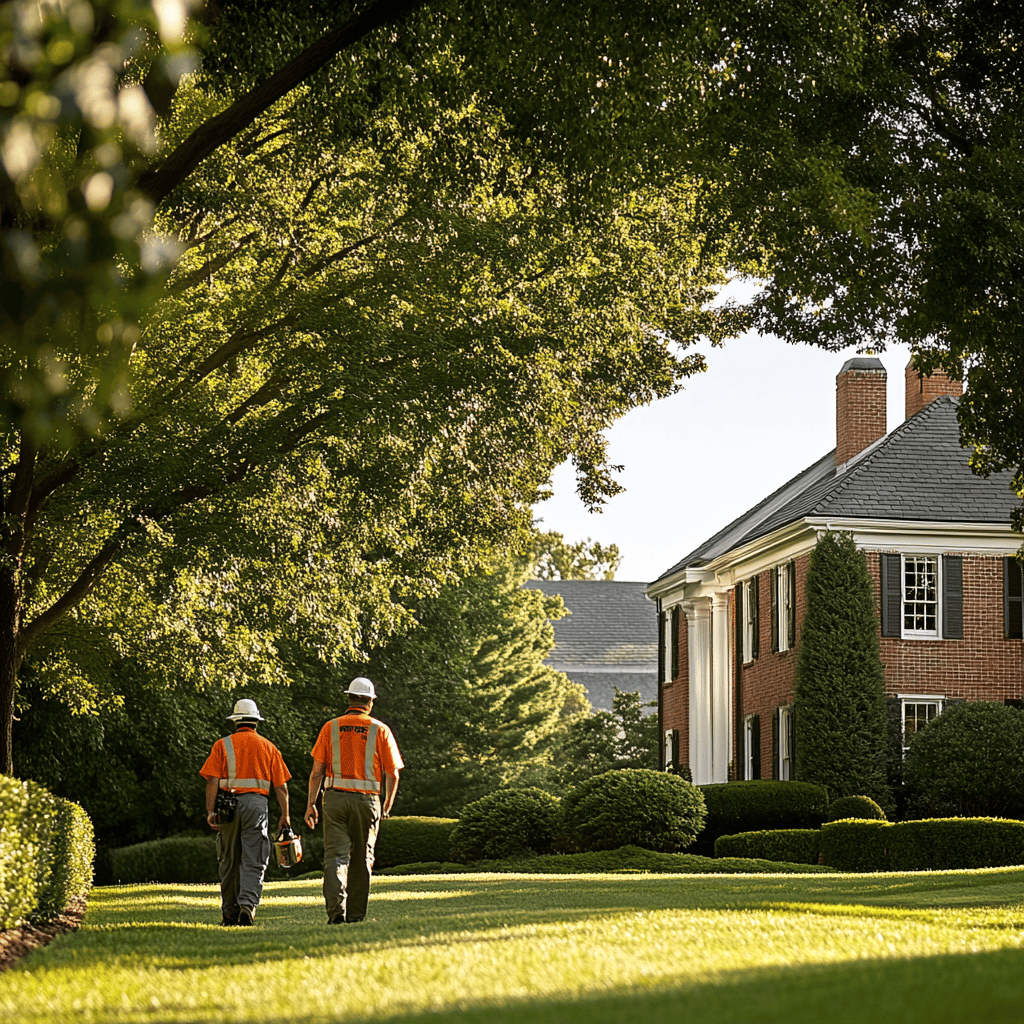
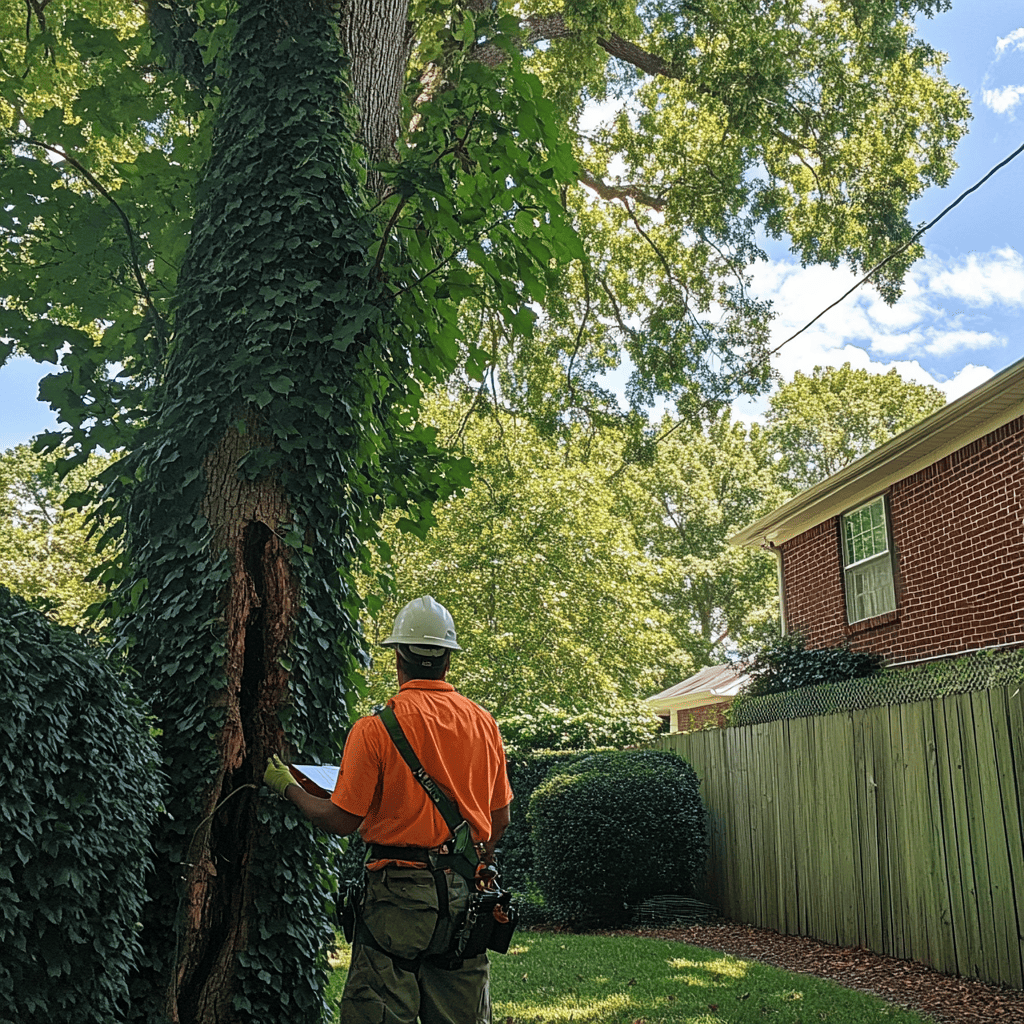
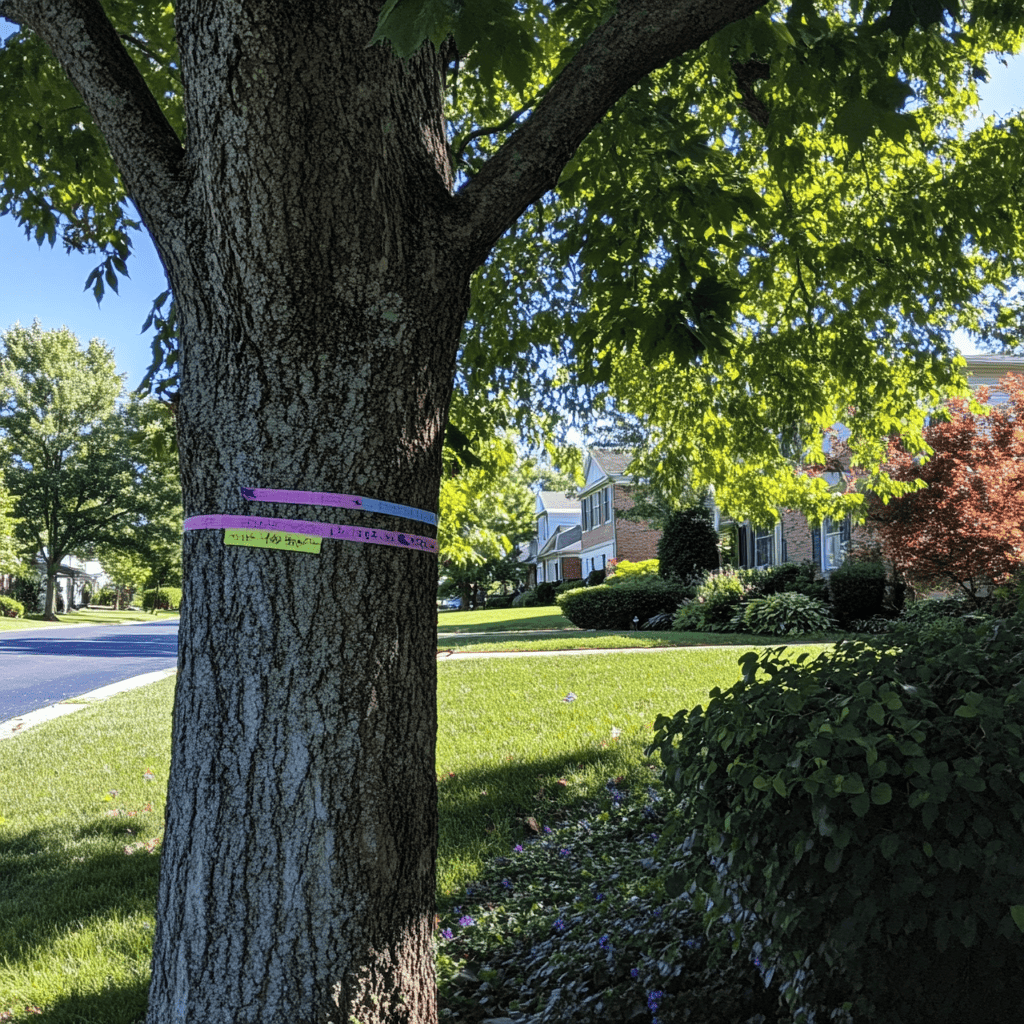
Clifton's Trusted Tree Health & Risk Assessment Specialists
United Tree Service provides expert tree health and risk assessment services throughout Clifton and surrounding Northern Virginia communities. We help property owners gain a clear understanding of their trees’ condition and any associated hazards. Recognized as Clifton’s leading tree service company, our professional team consists of knowledgeable arborists who blend scientific understanding with practical field experience. With over 15 years in the tree service industry, our highly skilled professionals understand the specific challenges and growth patterns of trees in the Clifton climate and environment. We are dedicated to providing clear, unbiased advice and effective solutions that help your trees stay healthy, protect your property, and add lasting value to your landscape.
Why Professional Tree Health & Risk Assessments are Needed for Clifton Properties
Accurate Tree Health Diagnosis
Trees can suffer from a variety of health issues, including nutrient deficiencies, fungal infections, bacterial diseases, and insect infestations. For Clifton property owners, it can be difficult to correctly identify the cause of tree decline. A professional tree health assessment provides an accurate diagnosis from an expert, pinpointing the specific problem affecting your tree. This helps make sure that any subsequent treatments are appropriate and effective, avoiding wasted effort and promoting real recovery.
Thorough Tree Risk Evaluation
Large or aging trees, even seemingly healthy ones, can pose safety risks if they have hidden structural weaknesses, decay, or unstable limbs. These risks may not be obvious to the untrained eye. During a tree risk assessment, a qualified arborist evaluates the tree’s structure and overall condition to identify potential hazards. They can then recommend specific actions, such as targeted pruning, cabling, or removal, to reduce the likelihood of tree failure and keep your Clifton property safe.
Strategic Tree Preservation
Valuable trees add significant beauty, shade, and property value. When these trees show signs of stress or damage, the initial reaction might be to consider removal. A tree health assessment can provide alternative solutions for preservation. Arborists specialize in methods like soil amendments, root collar excavation, and structural support systems that can often restore a tree’s health and extend its life, protecting your investment in your Clifton landscape.
Proactive Pest and Disease Management
Clifton’s trees are susceptible to regional pests and diseases that can spread quickly if left unaddressed. A health assessment helps identify early signs of infestation or infection. An arborist can then recommend and develop effective management strategies, including preventative treatments, to protect not only the affected tree but also other healthy trees on your property from future outbreaks.
Guidance for Property Development and Construction
If you are planning construction, renovations, or significant landscaping projects near existing trees on your Clifton property, a tree health and risk assessment is highly beneficial. An arborist can assess the impact of proposed work on trees, advise on tree protection zones, and recommend strategies to mitigate damage to tree roots and crowns during development, helping to preserve your trees through construction.
Long-Term Tree Care Strategy
Trees need ongoing care to stay healthy and beautiful. A professional tree health and risk assessment can help you develop a customized long-term tree care plan for your Clifton property. This includes advice on appropriate watering, fertilization schedules, and periodic pruning needs, making sure your trees receive the correct attention for sustained vigor and beauty over many years.
Our Complete Clifton Tree Health & Risk Assessment Services
Detailed Tree Health Evaluations
Our certified arborists conduct detailed, on-site health evaluations of your trees in Clifton. We closely examine all parts of the tree, including leaves, branches, trunk, and root flare, for any signs of disease, insect activity, nutrient deficiencies, or environmental stress. Our goal is to provide a clear and accurate diagnosis of your tree’s condition, explaining our findings in plain language. We use diagnostic tools when needed to determine the precise nature of any issues.
Thorough Tree Risk Assessments
Understanding the safety of your trees is important for property owners. Our arborists perform thorough tree risk assessments to identify potential hazards. We evaluate the tree’s structural integrity, looking for weaknesses, decay, or unstable limbs that could pose a risk to people or property. This includes assessing:
- Structural Defects: Cracks, splits, weak branch attachments.
- Decay and Cavities: Internal or external signs of wood rot.
- Root System Integrity: Signs of root rot, girdling roots, or instability.
- Target Assessment: Evaluating what could be damaged if the tree or parts of it were to fail (e.g., house, fence, driveway). We then provide clear recommendations for mitigating these risks, which may involve specific pruning, cabling, or, in some cases, removal.
Pest and Disease Identification and Management Plan
Trees in Clifton can be affected by a variety of local pests and diseases. Our arborists specialize in identifying the specific insect or pathogen causing problems.
- Accurate Identification: We pinpoint the exact pest or disease.
- Treatment Options: We present appropriate and environmentally responsible treatment options.
- Preventative Advice: We provide guidance on how to protect healthy trees and prevent future infestations or infections through proper cultural practices and regular monitoring.
Soil Analysis and Nutrient Recommendations
Healthy trees begin with healthy soil. We can assess your Clifton property’s soil conditions to determine its suitability for your trees.
- Soil Sampling: Collecting samples to identify nutrient deficiencies or imbalances.
- pH Testing: Measuring soil acidity or alkalinity.
- Compaction Assessment: Checking for compacted soil that hinders root growth. Based on our findings, we recommend specific soil amendments or fertilization programs to improve tree vigor and resistance to stress.
Tree Structural Evaluation (Cabling & Bracing)
When trees have structural weaknesses but are otherwise healthy, removal may not be the only option. Our assessments include evaluating if cabling or bracing can provide needed support.
- Limb Support: Determining if weak or codominant stems can be stabilized.
- Crack Prevention: Installing systems to reduce the likelihood of cracks or splits.
- Storm Damage Mitigation: Helping trees recover and remain safe after weather events. We advise on the correct type and placement of support systems to lengthen the life of your valuable trees.
Post-Storm Tree Damage Assessments
After severe weather in Clifton, trees can suffer hidden or visible damage. Our arborists perform rapid assessments to:
- Identify Hidden Damage: Locate internal cracks or root damage not immediately visible.
- Assess Immediate Risk: Determine if any parts of the tree pose an immediate falling hazard.
- Develop Recovery Plans: Recommend restorative pruning or other interventions to help the tree recover and reduce future risks.
Protect Your Property With Professional Tree Care
What Happens During a Tree Health & Risk Assessment?
A professional tree health and risk assessment with United Tree Service in Clifton, VA, is a structured process designed to give you clear, expert advice about your trees. It’s a detailed investigation to help you make informed decisions about their well-being and safety.
Here is a general outline of what occurs during an assessment:
1. Initial Contact and Information Gathering:
- When you contact us, we will ask about your specific concerns or observations regarding your trees. This could include noticing disease symptoms, worrying about a tree leaning, or simply wanting a general safety check for your property.
- We gather basic property information to prepare for the visit.
2. On-Site Visit and Comprehensive Visual Inspection:
- A certified arborist from United Tree Service will schedule a visit to your Clifton property.
- The arborist will begin with a thorough visual inspection of the tree(s) in question. This involves examining:
- The Canopy: Looking at the leaves for discoloration, wilting, insect damage, or sparse growth patterns. Checking for dead, broken, or crossing branches.
- The Branches and Limbs: Inspecting for signs of decay, unusual growths, cracks, or included bark.
- The Trunk: Examining the bark for cracks, splits, cavities, fungal growths (mushrooms), or signs of disease or pest activity. Checking for abnormal swellings or wounds.
- The Root Collar/Base: Carefully inspect the area where the trunk meets the ground for root issues (like girdling roots), decay, or pest activity.
- The Root Zone: Observing the soil conditions, drainage, and any disturbances around the roots.
- The Surrounding Area: Considering the proximity to structures, utility lines, pedestrian paths, and other plants that could be affected by the tree.
3. Detailed Assessment and Diagnosis:
- Based on the visual inspection, the arborist will perform a more detailed assessment. This may involve:
- Identifying Pests or Diseases: If signs of infestation or infection are present, the arborist will work to identify the specific pathogen or insect. This might involve looking for specific insect evidence or disease patterns.
- Structural Integrity Evaluation: Using tools if necessary to probe for internal decay, evaluate the strength of branch attachments, and assess the overall stability of the tree.
- Risk Categorization: Determining the likelihood of tree failure and the potential impact if it were to fall. This helps prioritize any recommended actions.
- Environmental Factors: Considering how factors like soil compaction, recent weather events, or construction activities might be affecting the tree’s health and stability.
4. Discussion of Findings and Recommendations:
- The arborist will explain their observations and diagnosis in clear, understandable terms, showing you any specific issues they found.
- They will then present their professional recommendations. These might include:
- Specific Treatments: For diseases or pests (e.g., targeted pruning, fertilization, application of specific treatments).
- Pruning Strategies: To improve health, structure, or reduce risk.
- Cabling or Bracing: For structural support to weak limbs or trunks.
- Soil Amendments: To improve nutrient availability or drainage.
- Watering Guidance: Advice on appropriate irrigation.
- Tree Removal: If the tree is dead, severely diseased, or poses an unacceptable risk that cannot be mitigated by other means.
- Monitoring Plan: Suggesting a schedule for regular checks for ongoing issues.
5. Answering Your Questions:
- This is your opportunity to ask any questions you have about your trees, the arborist’s findings, or the recommended services. The arborist will provide detailed answers to help you make informed decisions.
6. Providing a Service Proposal:
- Following the assessment, you will receive a written proposal outlining the recommended services, the scope of work, and the associated costs. This proposal is provided with no obligation.
The goal of our tree health and risk assessment service in Clifton is to equip you with the knowledge and professional recommendations you need to properly care for your trees and landscape, keeping them healthy and safe.
Signs Your Clifton Tree Needs a Health & Risk Assessment
Recognizing signs that your trees are struggling can help prevent small problems from becoming severe issues. As a Clifton property owner, keeping an eye out for these indicators can tell you it’s time to call United Tree Service for a professional tree health and risk assessment.
1. Abnormal Leaf Appearance:
- Discoloration: Leaves turning yellow, brown, or purplish when they should be green, especially outside of autumn.
- Wilting or Curling: Leaves that appear droopy, shriveled, or unnaturally curled, even with adequate watering.
- Unusual Spots or Growths: Presence of dark spots, powdery mildew, galls, or other growths on leaf surfaces.
- Premature Leaf Drop: Leaves falling off the tree too early in the season.
- Sparse Canopy: The tree’s canopy appears thinner than normal, with fewer leaves than expected.
2. Bark and Trunk Irregularities:
- Cracks, Splits, or Peeling Bark: New or expanding cracks in the trunk or major limbs, or bark that is detaching.
- Holes or Exit Wounds: Small, circular, or D-shaped holes in the bark, sometimes accompanied by sawdust-like material (frass), pointing to insect borers.
- Fungal Growths: Mushrooms, conks, or shelf-like fungi growing on the trunk, branches, or at the tree’s base, which strongly suggest internal decay.
- Cankers: Sunken, discolored, or oozing areas on the bark, indicating localized dead tissue often caused by disease or injury.
3. Deadwood or Weakened Branches:
- Excessive Dead Branches: A significant number of dead branches within the canopy, especially larger ones.
- Hanging or Broken Limbs: Branches that are broken or dangling, posing an immediate falling hazard.
- Weak Branch Attachments: Branches that appear to be poorly attached to the trunk, often forming a narrow “V” shape rather than a strong “U” shape, are more prone to breaking.
4. Tree Lean or Root Problems:
- Sudden Lean: A noticeable and sudden increase in the tree’s lean, indicating potential root failure or instability.
- Heaving Soil or Root Fractures: Soil that appears to be pushed up or cracked around the base of the tree, suggesting compromised roots or instability.
- Girdling Roots: Roots that grow around the trunk or other roots, constricting them and cutting off nutrient flow, are often visible at the tree’s base.
- Mushrooms or Fungi at Base: Fungal growth near the root flare or on the ground directly adjacent to the tree can indicate root rot.
5. Pest Presence:
- Visible Insects: Seeing large numbers of specific insects (e.g., aphids, caterpillars, scale insects) on your tree, or insect eggs, webs, or tents.
- Honeydew: A sticky, shiny substance on leaves or objects below the tree, which is a byproduct of sap-sucking insects.
- Defoliation: Significant loss of leaves due to insect feeding.
6. Changes in Growth or Vigor:
- Stunted Growth: If your tree is not growing as expected compared to other trees of its species or age, it could be suffering from stress, poor soil, or root issues.
- Poor Bloom or Fruit Production: For flowering or fruit-bearing trees, a noticeable decline in blooms or fruit can signal health issues.
7. Proximity to Structures or Changes in Environment:
- Growing Towards Structures: If a tree’s branches are extending too close to your home, garage, or power lines.
- Recent Construction: If construction, excavation, or significant changes have occurred near the tree’s root zone, even if damage is not immediately visible.
- Storm Damage: Even if a tree appears fine after a storm, hidden damage could exist, posing future risks.
If you observe any of these signs on your Clifton property, a professional tree health and risk assessment from United Tree Service can provide the clarity and solutions needed to protect your trees and property.
Benefits of Getting a Professional Tree Health & Risk Assessment for Clifton Properties
Getting a professional tree health and risk assessment from United Tree Service provides specific benefits for Clifton property owners. These assessments go beyond simple observation, providing detailed insights and actionable plans for your tree assets.
- Accurate Problem Identification: Our certified arborists can precisely identify the causes of tree decline, whether it is a specific disease, insect infestation, nutrient deficiency, or environmental stress. This accuracy helps make sure that any recommended treatments are targeted and effective, avoiding guesswork.
- Early Detection of Issues: Assessments help catch tree health problems or structural weaknesses in their early stages. Addressing issues promptly can prevent them from worsening, potentially saving the tree and avoiding more costly interventions later.
- Enhanced Property Safety: A primary benefit is the reduction of hazards. Our arborists systematically evaluate the tree’s structure and stability, pinpointing weak limbs, internal decay, or root problems that could lead to tree failure. This helps protect your home, other structures, and family members from potential falling trees or branches.
- Informed Decision-Making: With a clear understanding of your tree’s condition and risks, you can make informed decisions about its future. This includes deciding whether to prune, treat, support, or remove a tree, based on expert advice rather than assumptions.
- Preservation of Valuable Trees: For important or cherished trees, an assessment can uncover ways to preserve them. Arborists can recommend specific treatments, cabling, or other interventions to extend the life and health of a tree that might otherwise be considered for removal, protecting your landscape investment.
- Cost Savings Over Time: Proactive assessments and preventative care can save money. By identifying and addressing minor issues before they become severe, you can avoid expensive emergency removals, property damage, or the cost of replacing mature trees.
- Improved Tree Vigor and Longevity: By identifying health issues and recommending appropriate care (like proper pruning, fertilization, or soil improvements), assessments contribute to the overall vigor and long-term health of your trees, helping them thrive in the Clifton environment.
- Compliance with Local Regulations: Some tree work, especially removal, may require permits in Fairfax County. Our arborists are familiar with Clifton’s regulations and can advise on permit requirements, helping you maintain compliance.
- Increased Property Value and Aesthetics: Healthy, well-maintained trees significantly enhance the beauty and curb appeal of your property, contributing to its overall market value in Clifton.
- Peace of Mind: Knowing that your trees have been evaluated by an impartial expert provides confidence and peace of mind. You can rest assured that your tree care strategy is based on sound arboricultural principles.
Trust Clifton's United Tree Service for Expert Tree Health & Risk Assessment Solutions
At United Tree Service, we believe that understanding your trees is the first step toward their healthy and safe existence. Our tree health and risk assessment services in Clifton are designed to provide property owners with the clear, expert guidance they need to care for their trees effectively. We understand that your trees are valuable assets, and our goal is to help you protect that investment.
Our experienced arborists combine their deep knowledge of tree biology with a practical understanding of Clifton’s specific environmental conditions. We are dedicated to offering unbiased assessments, accurate diagnoses, and practical recommendations that empower you to make the best choices for your trees’ long-term well-being and the safety of your property. Whether you are facing a specific tree problem, worried about a tree’s stability, or simply seeking proactive tree health advice, United Tree Service is here to help.
Our experienced arborists combine their deep knowledge of tree biology with a practical understanding of Clifton’s specific environmental conditions. We are dedicated to offering unbiased assessments, accurate diagnoses, and practical recommendations that empower you to make the best choices for your trees’ long-term well-being and the safety of your property. Whether you are facing a specific tree problem, worried about a tree’s stability, or simply seeking proactive tree health advice, United Tree Service is here to help.
Contact Clifton's United Tree Service Today
Do not leave the health and safety of your trees to chance. Get the expert assessment you need to make informed decisions about your Clifton property’s trees. Contact United Tree Service today to schedule a free, on-site tree health and risk assessment. Our Clifton-based arborists are ready to evaluate your trees, answer your questions, and provide you with a tailored plan for their care. Call us now or complete our online form to get started. Let United Tree Service be your trusted resource for all your tree health and risk assessment needs in Clifton, VA!
